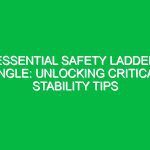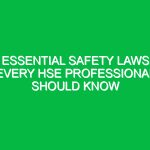Introduction
Hello team, and thank you for gathering for today’s Toolbox Talk. Our discussion will focus on an essential lifesaving device that often gets overlooked in our daily operations: the Automated External Defibrillator (AED). Understanding how to use an AED effectively can mean the difference between life and death in emergencies involving cardiac arrest. Our aim today is to ensure that everyone is informed about the importance of AEDs, how to use them, and the role they play in maintaining a safe workplace.
The Importance of AEDs in the Workplace
Cardiac arrest can happen to anyone, anywhere, and often without warning. In fact, it can occur due to various reasons including heart disease, trauma, or even intense physical exertion. According to the American Heart Association, immediate defibrillation can increase the chances of survival by 70%. By being familiar with Automated External Defibrillators, we equip ourselves to respond effectively in emergencies. This not only enhances our Safety but also reinforces our commitment to Health, Safety, and Environment (HSE) standards.
What is an Automated External Defibrillator (AED)?
To put it simply, an Automated External Defibrillator (AED) is a portable device that delivers an electric shock to the heart of someone experiencing a life-threatening arrhythmia, such as ventricular fibrillation. AEDs are designed to be user-friendly, allowing even those without medical Training to use them effectively. They offer step-by-step voice instructions, making it easy to follow along in high-pressure situations.
How Does an AED Work?
The Operation of an AED can be broken down into a few simple steps:
- Step 1: Turn on the AED. Most devices have a clear “on” button.
- Step 2: Attach the pads. The AED will provide guidance on where to place the pads on the patient’s chest.
- Step 3: Analyze the heart rhythm. The AED will automatically assess whether a shock is needed.
- Step 4: Deliver the shock. If advised, ensure everyone is clear of the patient before pressing the shock button.
- Step 5: Continue CPR if necessary. The AED will continue to provide instructions on the next steps.
Real-Life Scenarios
Let’s consider a hypothetical scenario. Imagine you are working on a construction site when a colleague suddenly collapses. You rush over and find they are unresponsive and not breathing. This is where knowing how to use an AED becomes crucial.
In this situation, your first step is to call for emergency help while someone else retrieves the AED. Once you have the AED, you would follow the steps outlined earlier. Having this knowledge could potentially save your colleague’s life.
Benefits of AED Training
Investing time in AED training offers numerous Benefits:
- Increased Confidence: Knowing how to use an AED can help reduce anxiety and hesitation in emergencies.
- Faster Response Times: Quick action can significantly improve survival rates.
- Preparedness: Being prepared can foster a culture of Safety and responsibility among employees.
Best Practices for AED Use
To ensure the effectiveness of AEDs in emergencies, follow these Best Practices:
- Regular Training: Participate in regular training sessions to stay updated on AED Procedures.
- Routine Maintenance: Check the AED regularly to ensure it is in working order, including battery and pad expiration dates.
- Location Awareness: Be aware of where the nearest AED is located in your work environment.
Potential Hazards and Safety Considerations
While AEDs are generally safe, there are a few considerations to keep in mind:
- Wet Environments: Ensure the area around the patient is dry to prevent Electrical Hazards.
- Metal Surfaces: Make sure the patient is not in contact with any metal surfaces when delivering a shock.
- Medical Devices: If the patient has implanted medical devices like pacemakers, avoid placing the pads directly over them.
Regulations and Standards
In many regions, regulations stipulate the presence of AEDs in workplaces, particularly in high-risk environments. Compliance with these Regulations is not just about legal obligations; it is about ensuring the safety of every employee. Familiarize yourself with your company’s specific policies regarding AEDs and HSE guidelines to ensure full compliance.
Engaging with the Team
As we wrap up our Toolbox Talk, I encourage you to think about how you would react in a cardiac emergency. Here are a few questions to consider:
- How many of you have seen or used an AED before?
- What are some challenges you think you might face in an emergency situation?
- How can we improve our training and awareness around AEDs in our workplace?
Feel free to share your thoughts; engaging in these discussions can enhance our preparedness and response capabilities.
Conclusion
In conclusion, the importance of being trained in the use of an Automated External Defibrillator (AED) cannot be overstated. By understanding how to operate an AED, we become proactive in safeguarding our workplace and our colleagues. Remember, every second counts in an emergency, and your actions could save a life. Thank you for your attention and commitment to maintaining a safe working environment. Let’s continue to support one another by being prepared and informed.


